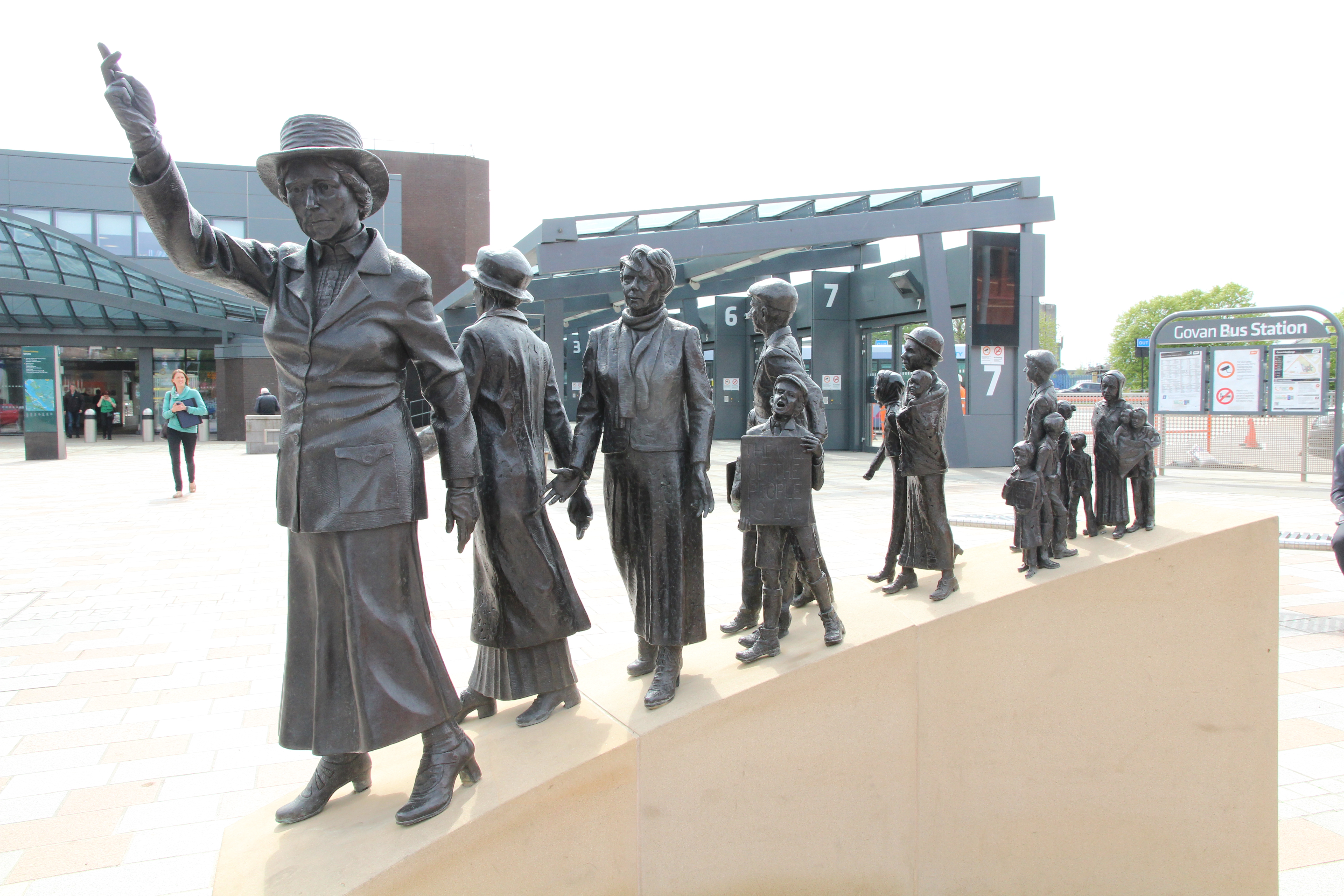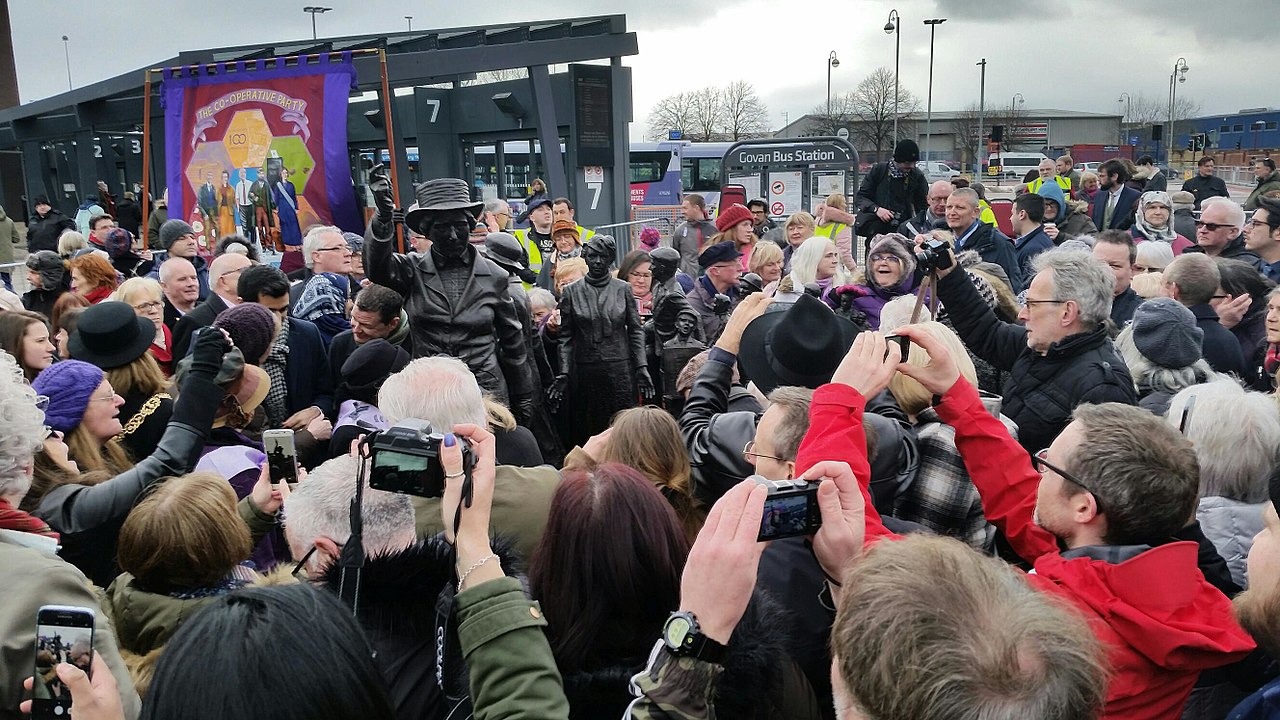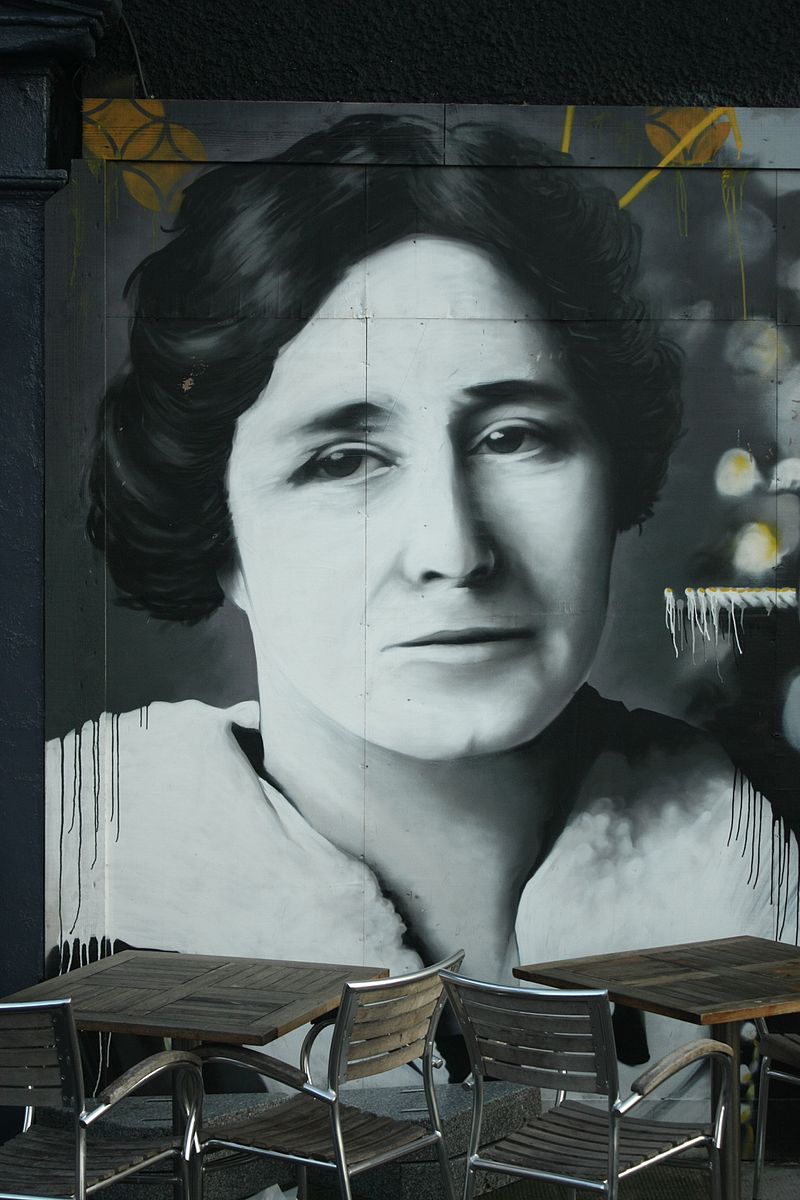1915: remembering a rent strike victory
by Frieda Park
On International Women’s Day, March 8th, this year a statue was unveiled in Govan in Glasgow to Mary Barbour and the working-class women, men and children who campaigned for fair rents in 1915. The movement was dubbed “Mrs Barbour’s Army” by Willie Gallagher and came at a time of increasing working class activity, including opposition to the imperialist slaughter of the First World War.
The chair of the Remember Mary Barbour committee the former Labour MP for Maryhill, Maria Fyfe said:
“Mary Barbour led the working class campaign against rent rises during the First World War. With demand outstripping supply, and the law on the side of the landlords, poor housing was offered at ever increasing prices. Mary Barbour and her army of women fought and won rent restriction legislation against all the odds.
“A century on, the private rented sector is once again growing dramatically, while affordable social housing is ever harder to access. Average rents in the private sector are rising faster than inflation yet standards for too many properties remain scandalously low.”
Maria’s words bring the issue bang up to date. Remembering our history is a lesson for today. We are still fighting for the same basic necessities of life and through that struggle we can win.
Scottish Labour’s new leader, Richard Leonard, has proposed a “Mary Barbour Law”, which was agreed at the Scottish party conference. It would enforce fair, affordable rents in the private sector and ensure that private rented properties meet the same standards as social housing.
THE 1915 RENT STRIKE
Fuelled by the First World War, people flooded into Glasgow to find jobs in the shipyards and other industries. Many men were also away fighting and landlords believed they could raise rents with impunity. They were very much mistaken as working-class women organised to resist the rent rises. Starting in Govan, those taking part continued to pay their old rent, but refused to pay any increase.
Helen Crawfurd, who was secretary of the Glasgow Women’s Housing Association and went on to join the Communist Party when it was established, told how the women fought back: “The Glasgow Women’s Housing Association took up this issue, and in the working class districts, committees were formed, to resist these increases in rents. Cards, oblong in shape, were printed with the words
‘RENT STRIKE. WE ARE NOT REMOVING.’
and placed in the windows of the houses where rent increases were demanded.”
They resisted intimidation by the landlords and the strike grew to involve around 20,000 tenants by November 1915 - continuing to spread. When intimidation failed, the landlords went to court to get eviction notices. In each tenement one woman would keep watch and on the approach of Bailiffs attempting to enforce the evictions, she would ring a bell or rattle a ricketty bringing the other women out to resist them. Bailiffs were prevented from entering the buildings by crowds of women and children and driven back by flour bombs and other missiles being hurled at them.
Matters came to a head when a landlord in Partick took a group of rent strikers to court for non-payment. A huge demonstration converged on the court and the women were joined by striking shipyard and engineering workers.
Concerned at this show of working class strength and the impact it might have on the war effort the Government became involved, ordering the release of the rent strikers. In a matter of only weeks, Parliament passed the Rent Restriction Act, the first of its kind in Europe. It fixed rents at pre-war levels for the remainder of the war and for six months after. A resounding victory for the working class women and men of Glasgow.
MARY BARBOUR (22/2/1875 – 2/4/1958)
Mary was the daughter of a weaver and her first job was as a thread twister. Her political activity began in the Socialist Sunday School and the Cooperative Womens Guild. She also campaigned against the First World War.
It was her leadership of the Rent Strike, however, that brought her to prominence and, at a time when there were few women holding office, in 1920 she was elected as an Independent Labour Party councillor for the Fairfield ward in Govan. Declaring herself a socialist, in her election address she said: “I do not wish to draw any distinction between men and women’s questions because essentially they are one, but I am convinced and have always advocated that women should take their full share of public work.”
She would not draw the distinction, yet much of her work was devoted to improving the lives of working class women which she no doubt also saw benefiting children, families, communities and men as well. She established wash houses, public baths, play areas, free school milk for children and was instrumental in setting up the first family planning clinic in Glasgow.
She was the first female Bailie of the city and one of the first female magistrates.

the statue of Mary Barbour by the sculptor, Andrew Brown at Glasgow, Govan underground station. Picture: Brian Purdie

8 March 2018 (International Women's Day) The unveiling of the Mary Barbour Statue at Govan Cross, Glasgow.

Mural of Mary Barbour in the Clutha Bar, Glasgow.






